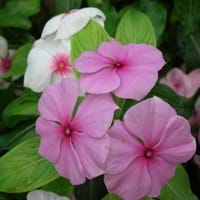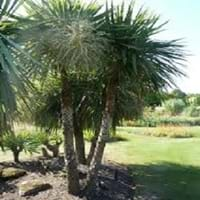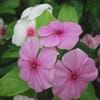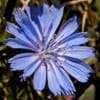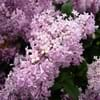Life Span
Perennial
Perennial
Type
Flowering Plants, Shrubs
Broadleaf Evergreen
Origin
Madagascar
New Zealand
Types
Purple vinca, Vinca, cherry red, strawberry color
Not Available
Number of Varieties
Not Available
Habitat
Subtropical climates, Tropical regions
Coastal Regions
USDA Hardiness Zone
4-9
8-11
AHS Heat Zone
12-1
Not Available
Sunset Zone
A1, A2, A3, H1, H2, 1a, 1b, 2a, 2b, 3a, 3b, 4, 5, 6, 7, 8, 9, 10, 11, 12, 13, 14, 15, 16, 17, 18, 19, 20, 21, 22, 23, 24
21,22
Habit
Clump-Forming
Upright/Erect
Flower Color
Magenta, Pink, Rose
White
Flower Color Modifier
Not Available
Bicolor
Fruit Color
Not Available
White, Blue
Leaf Color in Spring
Dark Green
Burgundy, Dark Red, Copper
Leaf Color in Summer
Dark Green
Burgundy, Dark Red, Copper
Leaf Color in Fall
Dark Green
Burgundy, Dark Red, Copper
Leaf Color in Winter
Dark Green
Burgundy, Dark Red, Copper
Leaf Shape
Oval
Long Narrow
Plant Season
Fall, Spring, Summer, Winter
Spring, Summer, Fall, Winter
Sunlight
Partial shade
Full Sun, Partial Sun, Partial shade
Type of Soil
Loamy, Sandy, Well drained
Loam, Sand
The pH of Soil
Neutral, Slightly Alkaline
Neutral, Alkaline
Soil Drainage
Well drained
Well drained
Bloom Time
Fall, Spring, Summer
Late Spring, Early Summer, Summer
Tolerances
Drought, Pollution, Salt
Drought, Salt
Where to Plant?
Container, Ground, Pot
Ground
How to Plant?
Seedlings, Stem Planting, Transplanting
Stem Planting, Transplanting
Plant Maintenance
Medium
Medium
Watering Requirements
Does not require lot of watering, Medium
Average Water Needs
In Summer
Lots of watering
Lots of watering
In Spring
Moderate
Moderate
In Winter
Average Water
Average Water
Soil pH
Neutral, Slightly Alkaline
Neutral, Alkaline
Soil Type
Loamy, Sandy, Well drained
Loam, Sand
Soil Drainage Capacity
Well drained
Well drained
Sun Exposure
Partial shade
Full Sun, Partial Sun, Partial shade
Pruning
Prune ocassionally
Prune if you want to improve plant shape, Remove damaged leaves, Remove dead leaves
Fertilizers
All-Purpose Liquid Fertilizer
All-Purpose Liquid Fertilizer
Pests and Diseases
Botrytis Blight, Canker, Crown rot, Pythium rot, Root rot
Red blotch
Plant Tolerance
Drought
Drought
Flowers
Yes
Insignificant
Flower Petal Number
Single
Single
Foliage Texture
Medium
Coarse
Foliage Sheen
Glossy
Not Available
Attracts
Butterflies
Caterpillar, Moths
Allergy
Intestinal gas, Nausea, Vomiting
Asthma
Aesthetic Uses
Beautification, Showy Purposes
Beautification, Landscape Designing, Showy Purposes
Beauty Benefits
Not Available
Not Available
Environmental Uses
Air purification
Air purification
Medicinal Uses
Chest pain, High blood pressure, Inflammation, Sore throat, Tooth ache, Wounds
Diabetes, Dysentry, Stomach pain
Part of Plant Used
Whole plant
Leaves, Root, Stem
Other Uses
Decoration Purposes, Showy Purposes, Used as Ornamental plant
Decoration Purposes, Employed in herbal medicine, Showy Purposes, Used As Food, Used as Ornamental plant
Used As Indoor Plant
Yes
No
Used As Outdoor Plant
Yes
Yes
Garden Design
Bedding Plant, Container, Edging
Container, Feature Plant, Foundation, Houseplant, Screening, Wind Break, Tropical
Botanical Name
Catharanthus roseus
CORDYLINE australis 'Red Star'
Common Name
Madagascar periwinkle or rosy periwinkle
Cabbage Palm
In Hindi
Periwinkle
गोभी पेड़
In German
Immergrün
Cabbage tree
In French
Pervenche
arbre de chou
In Spanish
Bígaro
árbol de la col
In Greek
μυρτιά
λάχανο δέντρο
In Portuguese
Mirta
repolho árvore
In Polish
Barwinek
kapusta drzewo
In Latin
Periwinkle
brassica ligno
Phylum
Mollusca
Magnoliophyta
Class
Gastropoda
Liliopsida
Order
Geraniales
Asparagales
Family
Apocynaceae
Asparagaceae
Genus
Catharanthus
Acidosasa
Clade
Not Available
Angiosperms, Monocots
Tribe
Not Available
Not Available
Subfamily
Not Available
Lomandroideae
Season and Care of Periwinkle and Cabbage Tree
Season and care of Periwinkle and Cabbage Tree is important to know. While considering everything about Periwinkle and Cabbage Tree Care, growing season is an essential factor. Periwinkle season is Fall, Spring, Summer and Winter and Cabbage Tree season is Fall, Spring, Summer and Winter. The type of soil for Periwinkle is Loamy, Sandy, Well drained and for Cabbage Tree is Loam, Sand while the PH of soil for Periwinkle is Neutral, Slightly Alkaline and for Cabbage Tree is Neutral, Alkaline.
Periwinkle and Cabbage Tree Physical Information
Periwinkle and Cabbage Tree physical information is very important for comparison. Periwinkle height is 1.97 cm and width 2.96 cm whereas Cabbage Tree height is 610.00 cm and width 240.00 cm. The color specification of Periwinkle and Cabbage Tree are as follows:
Periwinkle flower color: Magenta, Pink and Rose
Periwinkle leaf color: Dark Green
Cabbage Tree flower color: White
- Cabbage Tree leaf color: Burgundy, Dark Red and Copper
Care of Periwinkle and Cabbage Tree
Care of Periwinkle and Cabbage Tree include pruning, fertilizers, watering etc. Periwinkle pruning is done Prune ocassionally and Cabbage Tree pruning is done Prune if you want to improve plant shape, Remove damaged leaves and Remove dead leaves. In summer Periwinkle needs Lots of watering and in winter, it needs Average Water. Whereas, in summer Cabbage Tree needs Lots of watering and in winter, it needs Average Water.
